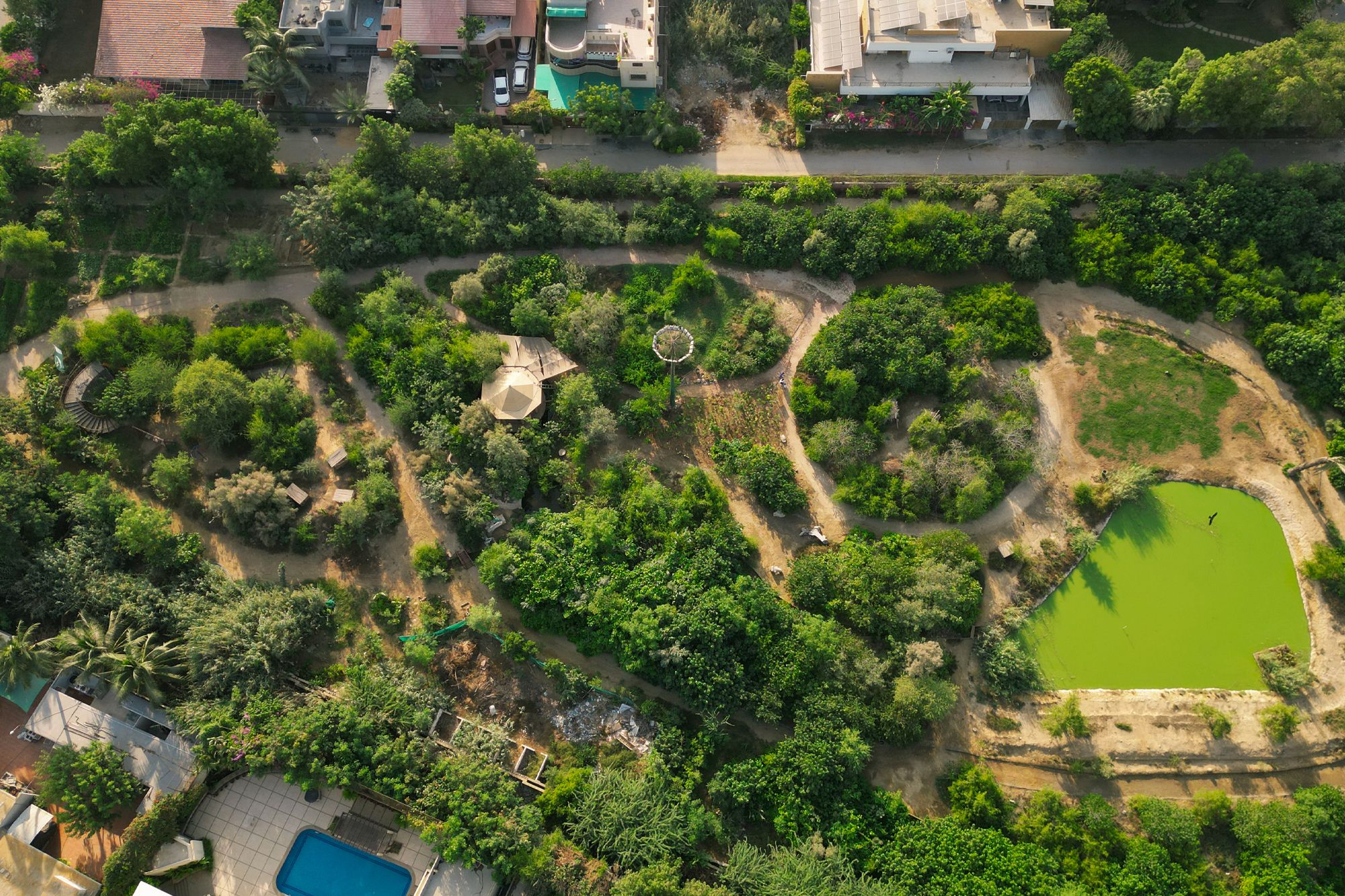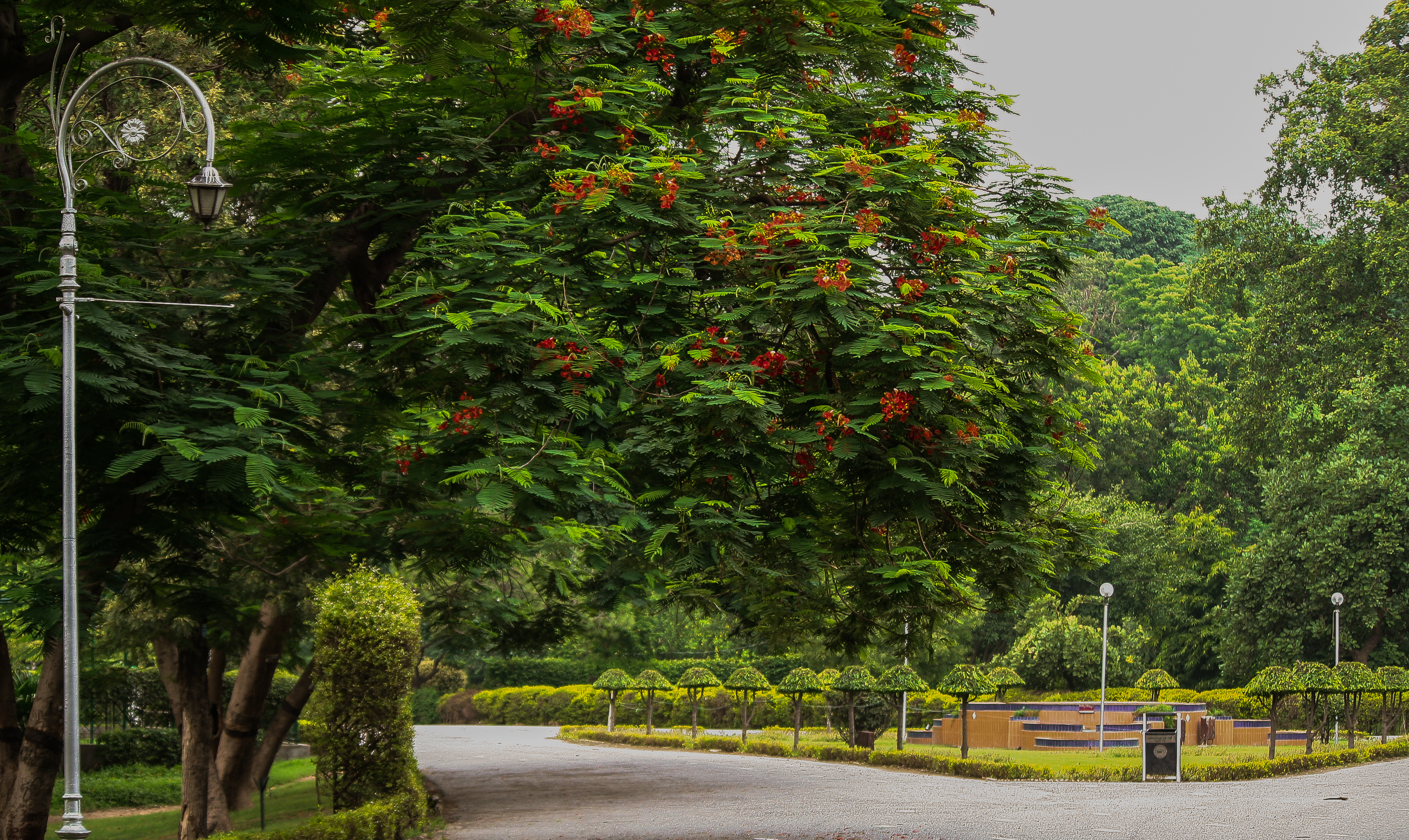Imagine a city where endless concrete stretches, traffic hums like a constant buzz, and the air feels heavy, thick with the heat of a thousand engines. Now imagine if that city could breathe again. Picture parks where trees sway gently, creating cool pockets of air amid the hustle and bustle.
Envision streets lined with verdant vines and lush grass, where the sound of birdsong blends with the rhythm of city life. In this vision, the city is not just surviving—it’s thriving, adapting to the shifting climate with the help of its most underrated hero: green spaces.
As climate change accelerates, cities around the world are facing an existential crisis. The heat is rising, the air is thickening, and the very ground beneath our feet is becoming harder to navigate. Yet, amidst the chaos, a green revolution is quietly unfolding. Green spaces, manifesting in various forms such as parks, gardens, street trees, and green roofs, are emerging as a crucial tool in combating climate change.
These urban oases offer a myriad of benefits that go beyond aesthetics, helping to cool the air, clean the environment, and even soothe the mind. But as the world’s cities grow, the question remains: can we harness the full power of green spaces to save our cities from the ravages of climate change?
Urban heat island effect
Let’s start with the heat. If you’ve ever stepped out in the scorching summer heat of Karachi or Lahore, you’ve felt it—the oppressive weight of urban temperatures that soar far above what rural areas experience.
This phenomenon, known as the urban heat island (UHI) effect, is a direct consequence of climate change, where cities become islands of intense heat surrounded by cooler rural regions. The concrete, asphalt, and steel that make up our cities absorb heat throughout the day and release it slowly at night, creating a relentless cycle of warmth.
But what if these islands of heat could be cooled, not with air conditioners or industrial solutions, but with nature itself? This is where green spaces come into play.
Research has shown that trees and plants can cool their surroundings by several degrees, simply through a process called evapotranspiration, where plants release water vapor into the air, which then cools the environment. In cities like Lahore, where summer temperatures regularly exceed 45°C, this cooling effect is nothing short of miraculous.
The green shield
Picture Lahore’s Jilani Park, a verdant haven amidst the city’s sprawling urban landscape. The lush trees and sprawling lawns here act as natural air conditioners, offering respite from the scorching summer sun.
Studies have demonstrated that green spaces like these can significantly lower urban temperatures by as much as 2-3°C, a cooling effect that can significantly improve the quality of life in a city where heatwaves are increasingly frequent and intense.
But it’s not just about cooling. These green lungs of the city serve another critical function—carbon sequestration. Trees, those silent warriors of the natural world, absorb carbon dioxide (CO2) from the air, mitigating the harmful effects of greenhouse gases. A single mature tree can absorb as much as 48 pounds (22 kilograms) of CO2 each year.
Imagine the potential if every park, every garden, every street tree in Lahore and Karachi contributed to this global effort. Together, these urban forests could remove thousands of tons of CO2 from the atmosphere, slowing the progression of climate change, one leaf at a time.
The air we breathe in cities like Karachi and Lahore is often thick with pollutants. Vehicle emissions, industrial output, and the burning of crop residue have pushed air quality levels into the red zone, with alarming consequences for public health. Respiratory illnesses, heart diseases, and even premature deaths have become tragically common. But what if the solution was right under our noses?
Green spaces act as nature’s air purifiers. Plants and trees absorb pollutants like nitrogen dioxide (NO2), sulfur dioxide (SO2), and particulate matter (PM), all of which are harmful to human health. A single mature tree can remove up to 1 ton of pollutants from the air every year. 
This can significantly impact cities with sky-high pollution levels. Lahore’s iconic Bagh-e-Jinnah, for example, acts as a sanctuary, filtering the air and offering residents a much-needed break from the toxic atmosphere of the city. Similarly, Karachi’s green initiatives, like the tree plantations along the city’s main roads, have contributed to improving the air quality in certain areas, providing a breath of fresh air in an otherwise polluted metropolis.
Biodiversity in concrete jungle
But green spaces are not just for humans—they are vital for the creatures that call the city home. In cities like Lahore and Karachi, where rapid urbanization has led to the destruction of natural habitats, green spaces provide crucial refuges for wildlife. From birds to insects to small mammals, these pockets of greenery offer food, shelter, and a chance for survival in an increasingly hostile environment.
Take, for instance, Lahore’s Harbanspura Wetlands, which serve as a haven for migratory birds on their journey from the north to the south. These urban wetlands, though small, are critical to maintaining biodiversity in the region. Similarly, Karachi’s Hawksbay Beach is home to one of the world’s most endangered species, the green sea turtle. Without these green spaces, urban wildlife would struggle to survive, and the delicate balance of ecosystems would be lost.
Beyond the environmental and ecological benefits, green spaces have an undeniable impact on mental health. In a city where the hustle and bustle of daily life can lead to stress, anxiety, and burnout, green spaces provide an oasis of calm. Studies have shown that spending time in nature can reduce cortisol levels (the stress hormone), improve mood, and enhance overall well-being. For people living in densely populated urban areas, a walk through the park or a quiet moment under the shade of a tree can provide a much-needed escape from the pressures of city life.
In Lahore, places like the Lahore Zoo and Shalimar Gardens are not just historical sites—they are spaces for relaxation and rejuvenation, offering residents a mental break from the chaos of city living. Similarly, Karachi’s Clifton Boat Basin Park provides a serene environment for those seeking solace by the water, away from the noise and pollution of the city.
As climate change continues to reshape our world, cities must adapt. One of the most effective ways to build climate resilience is through green infrastructure—nature-based solutions that integrate green spaces into urban planning. By incorporating trees, green roofs, and rain gardens into the design of urban areas, cities can better manage stormwater, reduce flooding, and mitigate the effects of extreme weather events.
In Lahore, green roofs are slowly becoming more common, with buildings adopting this environmentally friendly approach to reduce heat and manage rainwater. Similarly, Karachi’s Urban Forest Project is a bold step toward creating a more sustainable and flood-resistant city, with plans to plant thousands of trees in key areas to address both climate change and urbanization challenges.
Economic value of green spaces
Beyond the environmental, social, and health benefits, green spaces have significant economic value. A study conducted by The Nature Conservancy found that every dollar invested in urban green spaces returns $4.20 in benefits. These benefits include reduced healthcare costs, higher property values, and increased tourism revenue. In Lahore and Karachi, green spaces not only enhance the quality of life but also contribute to the local economy by attracting tourists and raising property values.The evidence is clear: green spaces are a powerful tool in the fight against climate change. From cooling the urban heat islands to improving air quality, reducing carbon emissions, enhancing biodiversity, and boosting mental health, these natural spaces are essential to creating resilient, livable cities.
For cities like Lahore and Karachi, the need for more green spaces has never been more urgent. The time to act is now. By prioritizing the creation and protection of green spaces, we can build cities that are not only more sustainable but also more vibrant, more inclusive, and more capable of weathering the storms of climate change. The future of our cities depends on it—and the future of our planet will be greener because of it.



























